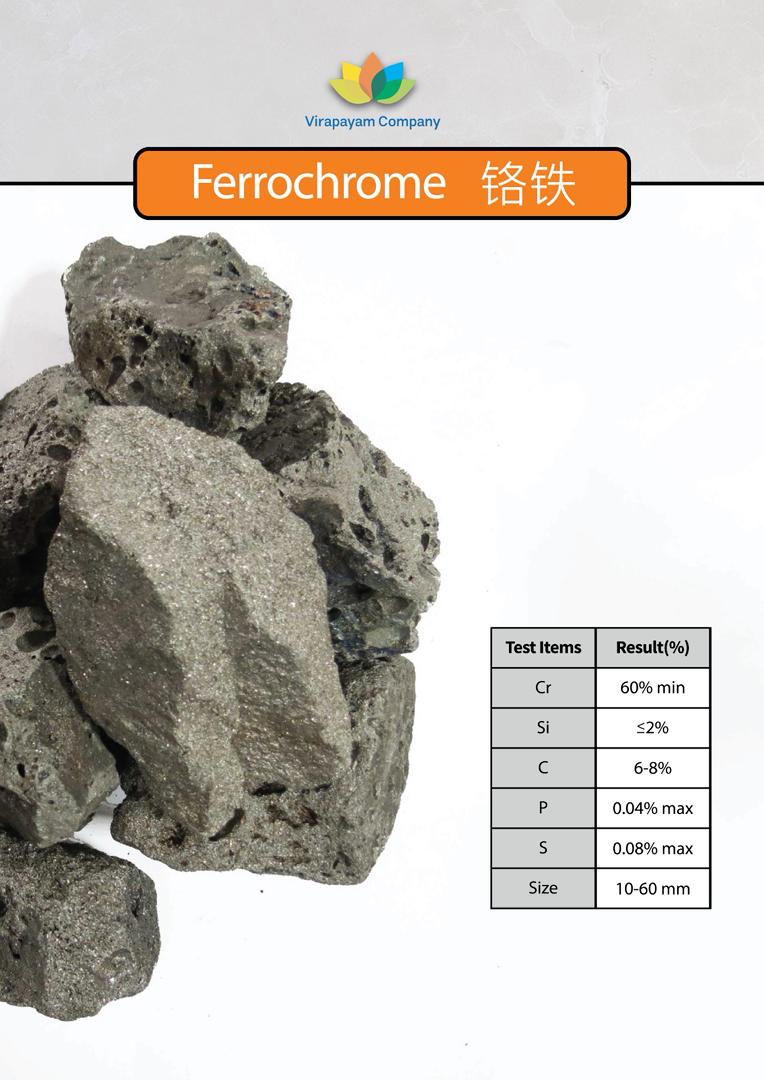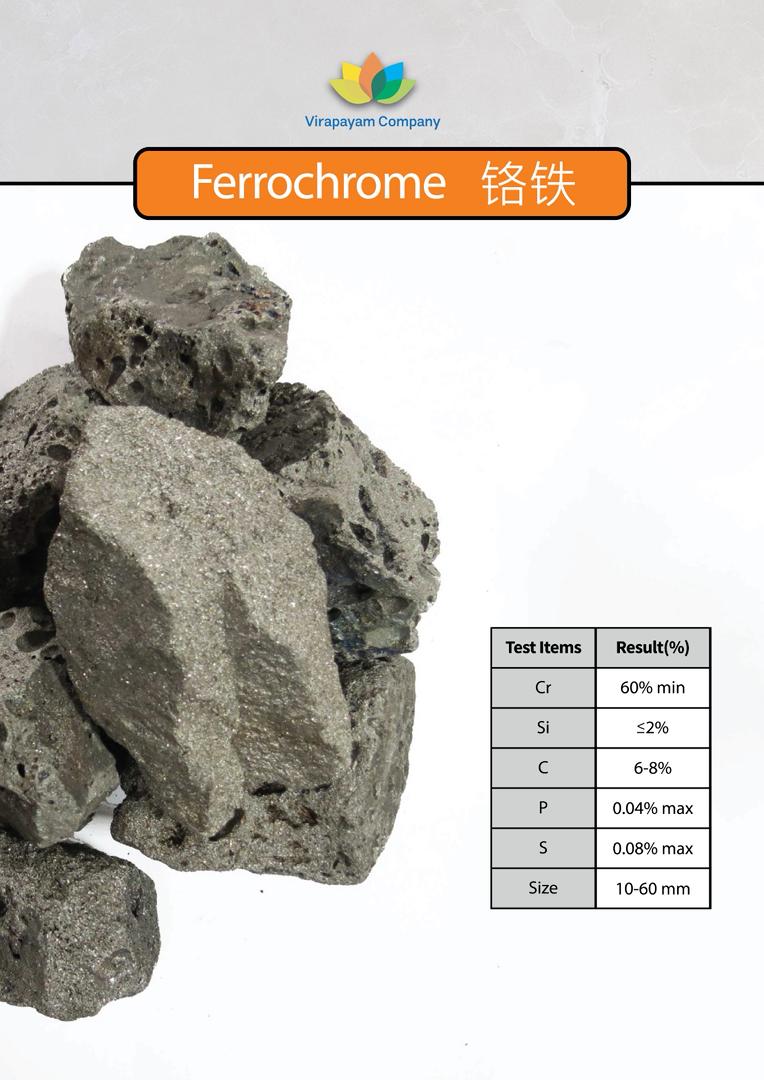
🔥 FERROCHROME – Earth's Metallic Fusion of Fire and Ore!
Born in the crucible of geological extremes, Ferrochrome is more than a metal alloy—it's a bridge between deep-Earth chemistry and industrial evolution. Forged through the fusion of chromium and iron-rich minerals, this material represents a dynamic chapter in Earth's metallogenic narrative. Here's an in-depth look at Ferrochrome as a geologically-derived product, rooted in chromite ore and metallurgical processes.
📌 Basic Identification
- Name: Ferrochrome
- Chemical Composition: FeCr (Iron + Chromium alloy, typically ~50–70% Cr)
- Source Mineral: Chromite (FeCr₂O₄)
- Material Type: Metallurgical alloy (not a mineral itself, but derived from minerals)
- Luster: Metallic to submetallic
- Hardness (parent ore – Chromite): ~5.5 on Mohs scale
- Specific Gravity (Chromite): ~4.5–5.1 g/cm³
- Fracture (Chromite): Uneven to subconchoidal
- Color (Chromite): Black to brownish-black
- Crystal System (Chromite): Isometric (cubic)
🌍 Geological Formation and Origin
Ferrochrome's natural origin lies in chromite deposits, which form in ultramafic and mafic igneous environments—places where Earth's mantle material interacts with crustal processes.
🧬 Modes of Chromite Formation:
- Layered Intrusions: Chromite accumulates in layers within large igneous complexes such as the Bushveld Complex (South Africa) or Stillwater Complex (USA).
- Ophiolite Complexes: Formed during seafloor spreading, chromite can be found in mantle peridotites later emplaced onto continental margins.
- Podiform Bodies: Discrete, lens-shaped chromite concentrations in serpentinized ultramafic rocks—common in tectonically active zones.
💎 Associated Minerals:
- Olivine
- Pyroxenes
- Serpentine
- Magnetite
- Platinum-group elements (PGE)
🌎 Global Occurrence and Deposits
Chromite, the sole mineral source of chromium and precursor to ferrochrome, is concentrated in a few key regions:
- South Africa: Bushveld Complex – the world’s richest and most extensive deposit
- Kazakhstan: Donskoy and Kempirsai regions – vast reserves in ophiolite belts
- India: Odisha and Karnataka – layered chromitite bands in ultramafic rocks
- Turkey: Podiform chromite in western Anatolia
- Zimbabwe: Great Dyke – chromite seams in mafic-ultramafic layered intrusions
- Iran: Hormozgan and Fars provinces – ophiolitic belts rich in podiform chromite
🏔 Chromite occurs in:
- Banded layers within gabbro and peridotite
- Disseminated grains in ultramafic massifs
- Podiform lenses along faulted and sheared serpentinized zones
🔬 Mineralogical and Physical Characteristics (Chromite)
- Crystal Habit
Typically forms octahedral or granular crystals, often intergrown or massive. - Color and Texture
Dark black to brownish-black, opaque with a metallic to dull luster. Often massive and resistant to weathering. - Magnetic Properties
Weakly magnetic due to iron content—useful in identifying and separating chromite during exploration. - Refractoriness
High melting point and structural stability under high temperatures make chromite a prime refractory material source.
🧪 Chemical Properties and Stability
- Chromite is chemically stable, resistant to weathering and corrosion.
- Under high temperatures and reducing environments (e.g., electric arc furnaces), it yields ferrochrome—a durable, lustrous alloy.
- Ferrochrome itself is highly resistant to oxidation, with strong chemical stability across a wide range of conditions.
🧭 Geological and Environmental Significance
- Tectonic Markers: Chromite-rich ophiolites are key indicators of ancient subduction and oceanic crust dynamics.
- Stratigraphic Records: Layered chromitites provide evidence for magmatic differentiation and cyclical
- intrusions in deep-seated igneous bodies.
- Geochemical Clues: The Cr/Fe ratio in chromite helps geologists understand mantle source characteristics and magmatic evolution.
🛑 Handling and Preservation (Chromite samples)
- Though chromite is durable, samples should be kept dry and free from contamination (especially during geochemical analysis).
- Avoid storage near strong magnets or in acidic conditions to prevent alteration.
✅ Summary
Ferrochrome is not just an industrial metal—it’s the blazing result of Earth’s metallogenic processes, born in the deepest layers of igneous activity and refined into a metallic legacy. Its origin in chromite, a mineral of mantle ancestry, ties it to tectonic drama, ancient magma flows, and layered igneous tapestries. With deposits spanning multiple continents and forming under precise geodynamic conditions, ferrochrome is a shining testament to the planet’s inner fire and geological complexity.

